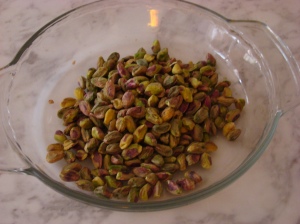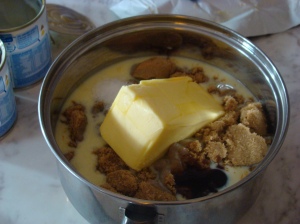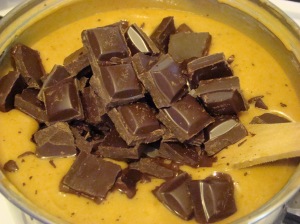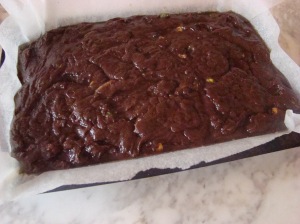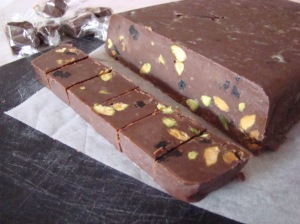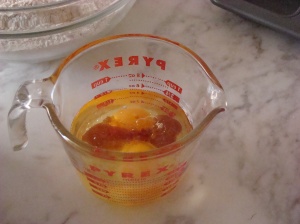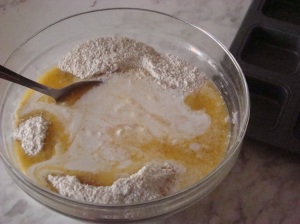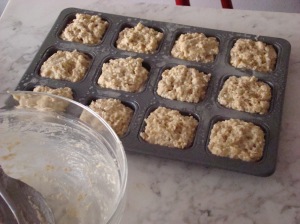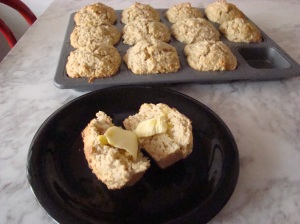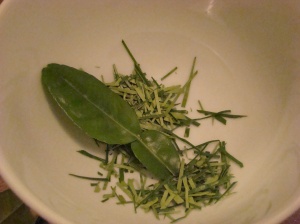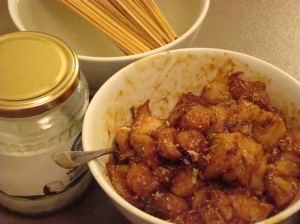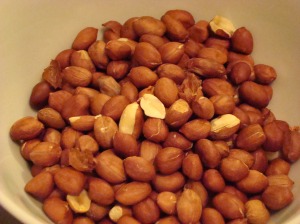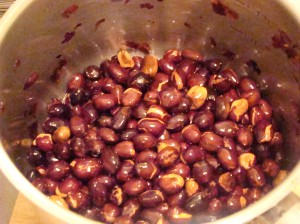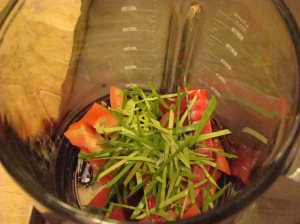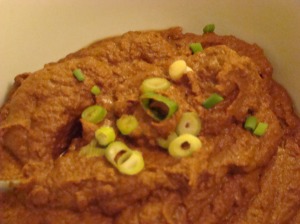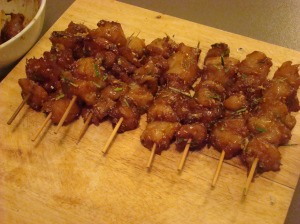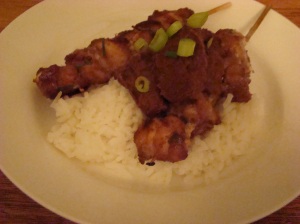By the time you read this, I will be on my way to the international airport, bound for a Cuban holiday. I am hoping to discover some new dishes and ingredients as part of my trip, and come back inspired to create some new recipes to share with you all. I have set up posts to publish while I am away, so as long as technology doesn’t fail me, you should still receive your weekly Passionfruit Project fix.
This week’s post is dedicated to a review of the book ” Family Food: A new approach to cooking”, by Heston Blumenthal. This is the first recipe book Heston published, before he shot to prominence with his celebrity-chef television career and around the time The Fat Duck restaurant in Bray started to win awards.
I was lucky enough to have lunch at The Fat Duck many years ago now, and it still ranks as one of my best foodie experiences, along with dinner at Tetsuya’s. Heston is known for his unique approach to cooking, quite often combining scientific principles in his cooking methods. This book is removed from the high tech principles Heston has become famous for, and instead focuses on classic, simple cooking suitable for the whole family, young and old alike. It talks a lot about how to get children involved in cooking and interested in food, but it is also a handy reference for anyone wanting to brush up on their cooking techniques, fill in any gaps, find some new inspiration or rediscover a classic dish. In this book Heston’s passion for food shines through, and he covers a full spectrum of dishes, from how to fry the perfect egg to strawberry soup.
A quote to give you a flavour of the book, “One of the main ambitions of this book is to bring children into the kitchen, and one of the best ways to do this is to make cooking as approachable as possible” from the Children’s tip in the section “Risotto”. The below recipe is quite labour and time intensive, and combines some unusual ingredients, but there are also plenty of more traditional recipes if you aren’t feeling like experimenting. I will confess, I haven’t actually attempted the below recipe, or tried the strawberry and black pepper combo that many chefs seem to be a fan of. I included the details to give you a sense of the book.
What I was cooking this time last year: Mini smoked salmon and cream cheese bagels (please note, Glick’s has moved)

Strawberry Soup
* This recipe is from the chapter “Desserts” by Heston Blumenthal in “Family Food: A new approach to cooking”.
“This recipe is part of a dish that is on the menu at the Fat Duck in season. Do give it a try, but please do it in the strawberry season. As well as quality, there is something quite magical about eating this during the English summer. Make sure that you buy the fruit no more than a day in advance, as they deteriorate really quickly.
* Children’s tip
Show the children how to spot a good strawberry – bright red in colour with a vivid green stem. Check that there are no blemishes or bruises on the strawberries. Contrary to popular belief, large, uniform strawberries are not a sign of quality. More often than not they are a result of laboratory-controlled agriculture.
If orange-flower water is not available, use rose water, which most chemists sell. Both of these ingredients are optional. You might want to omit the flower water the first time that you make this, as it could be too perfumed for your kids. Although, having said that, orange-flower water is still used to make a soothing sugared child’s drink in many parts of Europe. In Spain, it is also put on children’s pillows to give a comforting night-time aroma.
This recipe may seem rather lengthy, but the results will not disappoint. The concentration of flavour is amazing.
The strawberry juice can be omitted, although it is great as a base for making drinks or for pouring over ice-cream. It can even be added to the rice pudding recipe on page 305. It does keep very well.
* Tip
Even if you are a bit short of time and cannot do this recipe, you will be surprised at how much the flavour of the strawberries can be heightened just by sprinkling some unrefined caster sugar over them half an hour before serving. If you have not read it already, have a quick read of the findings of a recent experiment regarding strawberries on page 71.
Remember, when preparing strawberries, to hull them just before you macerate or use them. Do not wash them before hulling, or they will absorb water, destroying their taste and texture.
Try this recipe replacing the strawberries with rhubarb – it works brilliantly.
If doing the whole recipe, including the juice begin the day before. Some muslin will also be needed.
For the strawberry juice
- 500g strawberries
- 1 tablespoon icing sugar
- 1 tablespoon water
Wash, hull and quarter the strawberries, put them into a metal bowl and sprinkle them with the icing sugar. Set this bowl over a saucepan of very gently simmering water, cover with cling-film, and leave for 1 1/2 hours. Pour the contents of the bowl on to a large piece of muslin set over a bowl. Tie up the corners of the muslin and hang up over the bowl to catch all of the juice.
For the soup
- 500g strawberries
- 1 tablespoon unrefined caster sugar
- strawberry juice (see above)
- 1 orange
- 1 lemon
- 125ml fruity red wine
- orange-flower water to taste
- freshly ground black pepper
- extra virgin olive oil
Hull and quarter the strawberries and put them into a bowl. Add the sugar and pour over the strawberry juice, leave this mix to macerate for 2 hours.
Zest the orange and lemon, taking care to discard all of the white pith which would make the liquid bitter. Juice the fruits and reserve.
Meanwhile, bring the red wine to the boil and immediately flame it with a match, or better still, a blowtorch. When the flames have cased, add the zest and juice of the orange and lemon and boil to reduce the mixture by half. Strain this liquid and set aside to cool.
In the liquidizer, combine the macerated strawberries with the red wine reduction and blend.
Finishing the dish is the fun part, as it involves the taste-buds. Add the orange-flower water, about 1 tablespoon to begin with. A little more sugar may be needed along with some orange juice, depending on the ripeness and quality of the strawberries. The important thing here is to keep on tasting to get the right balance. Give the soup a really good blend and finish off by adding the black pepper to taste.
Now there are the following options:
- Hang the soup in muslin again overnight. This will produce a wonderfully concentrated essence of strawberry.
- Pass the soup through a fine-mesh sieve.
- Serve it as it is, adding extra strawberries for texture if required.
To serve, dribble over a little best-quality virgin olive oil. Finally, if feeling adventurous, finish the dish by sprinkling over some freshly picked rose petals!”

What is your favourite go-to cook book? Has this post inspired any new ideas?






